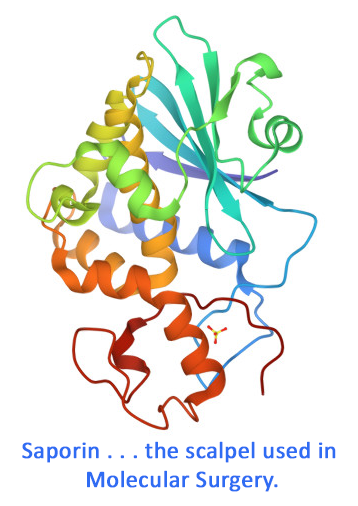CD117 is a transmembrane, tyrosine kinase growth factor receptor also known as c-Kit and mast/stem cell factor receptor (SCFR). It binds the c-Kit ligand (also known as steel factor, stem cell factor, and mast cell growth factor). CD117 is expressed on hematopoietic stem cells (including multipotent hematopoietic stem cells, progenitors committed to myeloid and/or erythroid lineages, and T and B cell precursors), mast cells, and acute myeloid leukemia cells. CD117 plays an essential role in the regulation of cell survival and proliferation, hematopoiesis, stem cell maintenance, gametogenesis, mast cell development, migration and function, and in melanogenesis.
Anti-CD117-SAP is a chemical conjugation of rat monoclonal CD117 antibody (Clone 2B8) and the ribosome-inactivating protein, saporin. Anti-CD117-SAP specifically eliminates cells that express CD117 in mice.
Anti-CD117-SAP is available individually (Cat. #IT-83) or as a kit (Cat. #KIT-83) which includes Anti-CD117-SAP and Rat IgG-SAP (Cat. #IT-17).
Looking to target CD117 in another species?
Let us know. We can make that for you!
keywords: CD117, c-Kit, SCFR, mast/stem cell factor receptor, stem cell factor receptor, steel factor, stem cell factor, and mast cell growth factor, Clone 2B8, saporin


james.miller –
I administered anti-CD117-SAP at a dose of 0.5mg/kg via retro-orbital injection. The product worked precisely as described in Czechowicz et al. (2019) Nature Communications. The inclusion of the isotope control was appreciated and has improved the rigor of our experiments. We intend on continuing to purchase this product for future experiments.
Jerry –
I utilized the IT-83 product in a preliminary experiment to create bone marrow chimeric mice. I administered anti-CD117-SAP at a dose of 1.5 mg/kg through retro-orbital intravenous injections, and no antibiotics were administered post-treatment. The mice displayed no signs of illness and appeared to be in good health.
I conducted an assessment of blood cell chimerism five weeks after depleting the bone marrow. The overall percentage of donor chimerism fell within the range of 16-20%. When focusing on specific subsets of immune cells, I observed that donor-derived neutrophils comprised 70-80%, B cells constituted 15-18%, and T cells were less than 1% of the total. These patterns seem to align with the findings presented in the research by Czechowicz et al. in Nat Commun 2019 (Figure 2). According to the aforementioned report, the donor lymphocyte chimerism is expected to increase in the coming months. Further monitoring of blood cell chimerism is scheduled.
*Reference:
Selective hematopoietic stem cell ablation using CD117-antibody-drug-conjugates enables safe and effective transplantation with immunity preservation.
https://www.nature.com/articles/s41467-018-08201-x